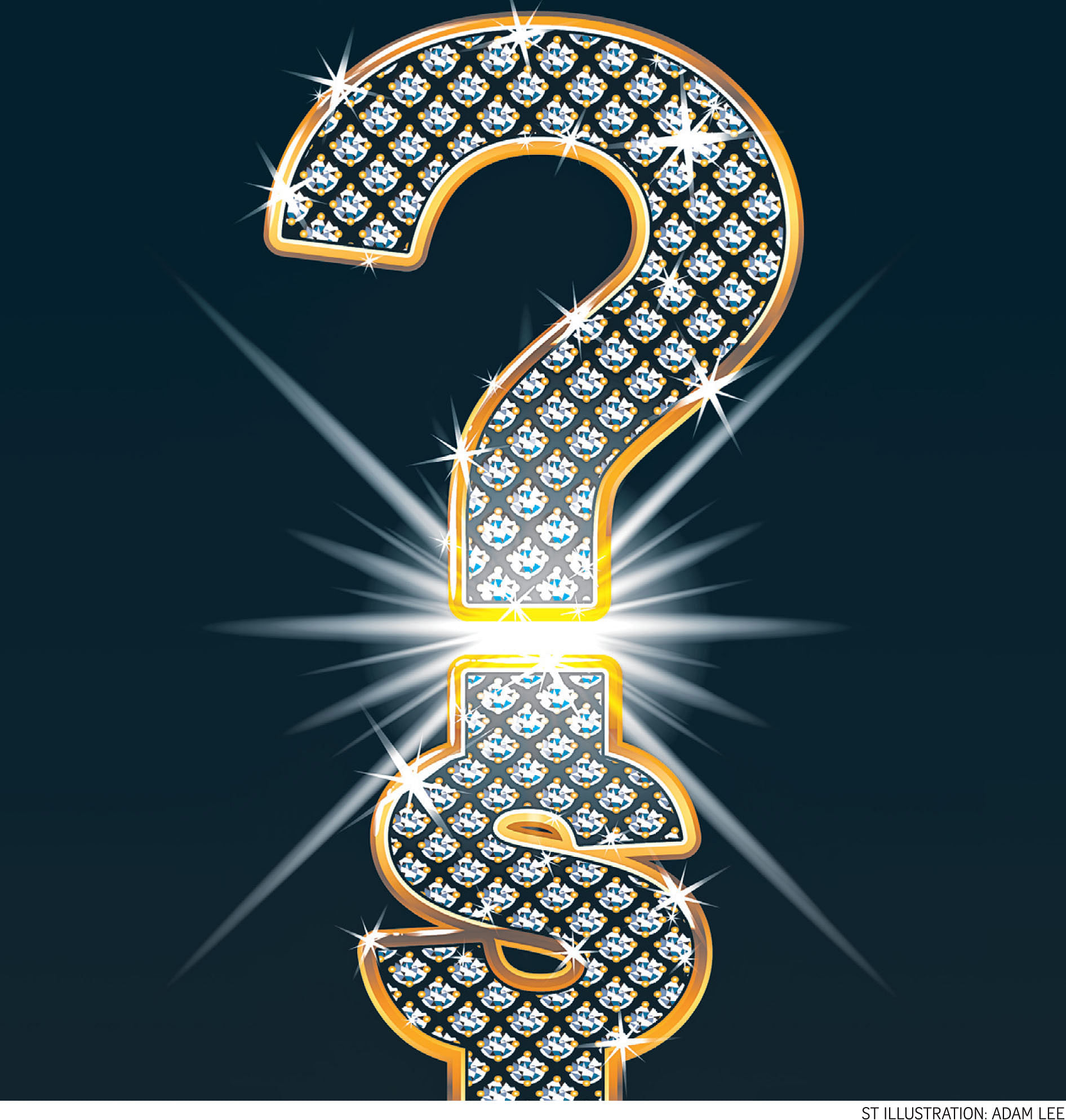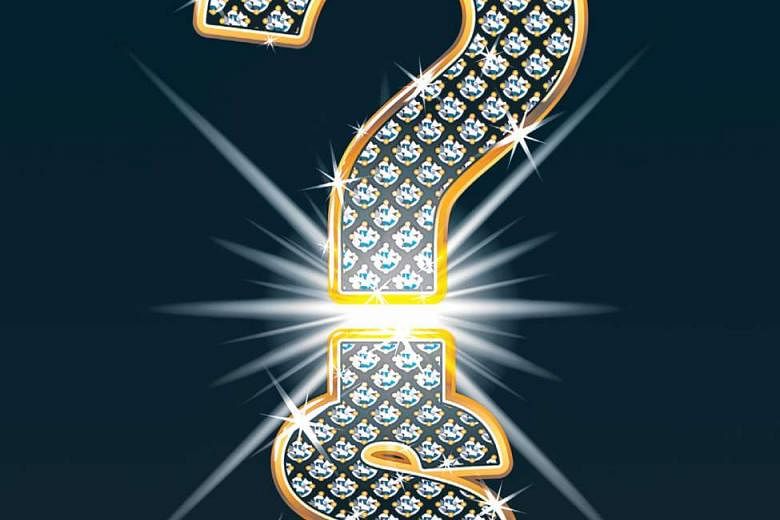I was pleased - but also slightly aghast - when my boyfriend presented me with a diamond ring a few months ago.
He spent a significant chunk of his monthly salary on it, even though he knew I would have been happy with something less lavish.
The money could have gone towards the down payment for our flat, I told him. Or savings for retirement. Or even a nice holiday.
Never mind, he replied. It's once in a lifetime, and the imitation diamonds weren't as shiny.
I appreciate the gesture of love and commitment, made all the more meaningful by his almost legendary frugality (he has been known to hesitate over spending more than $3 on a meal).

I am also relieved that he held off on spending a five-figure sum or some multiple of his salary.
This is because the hefty sums forked out for most diamond rings have more to do with a century-old marketing campaign than the intrinsic value of what is essentially a tiny piece of carbon.
It all started with diamond cartel De Beers, which, at its height, directly owned or controlled all the diamond mines in southern Africa and also owned diamond trading companies around the world.
The cartel went beyond fixing diamond prices.
It also sought to turn the tiny crystals of carbon into universally recognised tokens of wealth, power and romance.
To achieve this goal, De Beers launched an ingenious advertising campaign with the now-famous tagline "A Diamond Is Forever".
These efforts were wildly successful.
The share of brides in the United States receiving diamond engagement rings grew from 10 per cent in 1939, to 80 per cent by the end of the 20th century, according to a report by management consulting firm Bain & Company.
This trend was swiftly replicated elsewhere in the world, and De Beers' campaign continues to hold sway today.
In Singapore, as in many places around the world, diamond rings are still a coveted symbol of eternal love.
Many people still hold on to the notion that a man should spend a multiple of his monthly salary on his fiancee's diamond engagement ring, as a sign of his personal and professional success.
All of this has resulted in a common misconception that jewellery is an asset that can store value, appreciate and hedge against inflation.
This is part of the reason why some couples are willing to fork out thousands of dollars for diamond rings.
In fact, diamonds are a notoriously poor investment.
Unlike commodities like gold and silver - which are easily traded on financial markets - diamonds are not a store of value and do not appreciate with time.
A diamond loses a large portion of its value the second you leave the store with it - the value of the diamond purchased at retail is by no means the value you are likely to get back should you decide to resell it.
This is in addition to the fact that retail prices on new diamond jewellery are already marked up.
Diamond professionals use the four Cs when classifying and pricing diamonds: carats, colour, cut and clarity.
However, this classification scheme is extremely complicated and even professionals may not agree on how individual diamonds should be graded.
Due to the complexity of these four dimensions, it is also difficult to make direct comparisons between diamonds.
As a result, diamonds are not fungible, which means they cannot be easily exchanged with each other.
All of these factors contribute to an extremely illiquid resale market for diamonds.
The recently launched Singapore Diamond Investment Exchange, touted as the world's first commodity exchange in physically settled diamonds, might help with creating a more transparent, liquid market. But it is open only to accredited investors.
Investment-grade diamonds which can be sold for a profit do exist. Typically, these are diamonds with unique qualities, a long history, or both.
The most expensive diamond ever sold at auction is the Blue Moon diamond, which weighs a hefty 12.03 carats and sold for a whopping US$48.4 million (S$66.6 million) at a Sotheby's auction in Geneva last year.
The previous record holder for the most expensive diamond was the 24.78-carat Graff Pink, sold by Sotheby's for an eye-watering US$46.2 million in 2010.
For the vast majority of us, however, these stones are way out of reach, and diamonds purchased from jewellery retailers are usually of questionable resale value.
All of this is not to say, of course, that people should not buy diamonds.
Rationally, much of the value that society attributes to diamond rings is an illusion created by savvy marketing.
But that does not detract from their merit as treasured gifts.
The diamond ring I'm wearing would probably be worth relatively little to most others.
But for me and my boyfriend, its value goes beyond the price.


